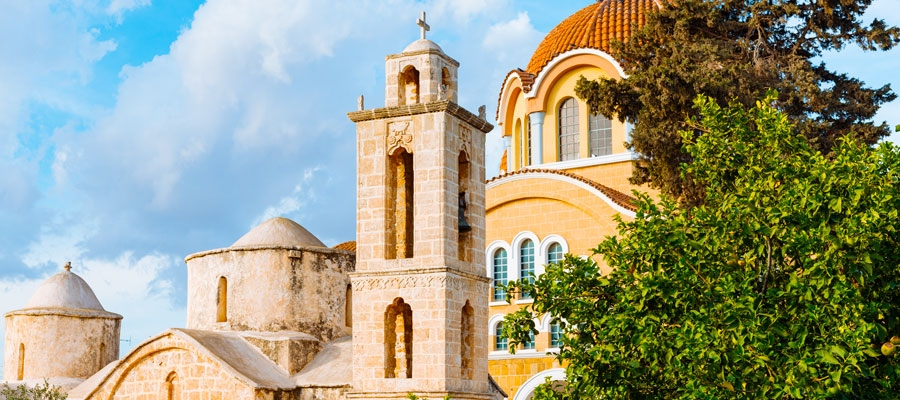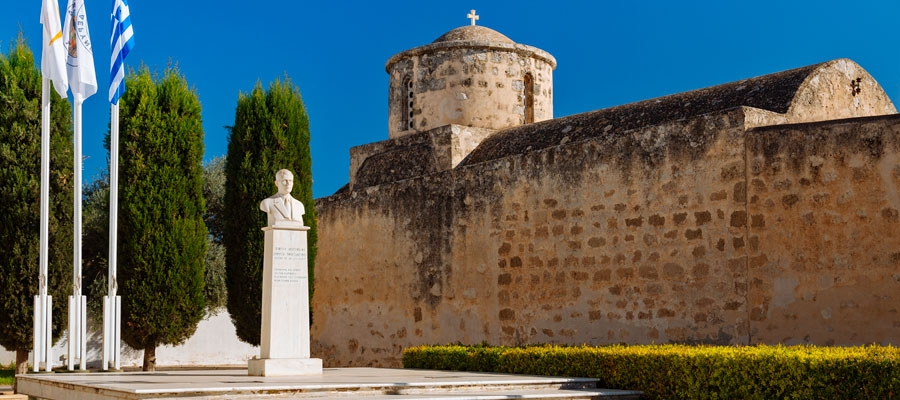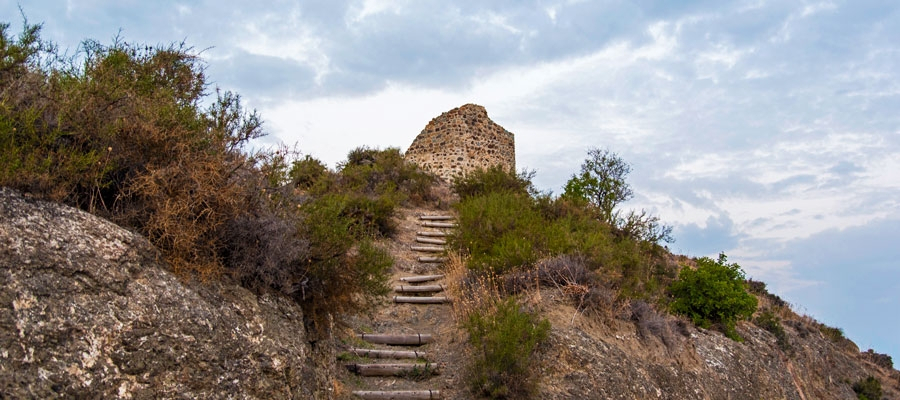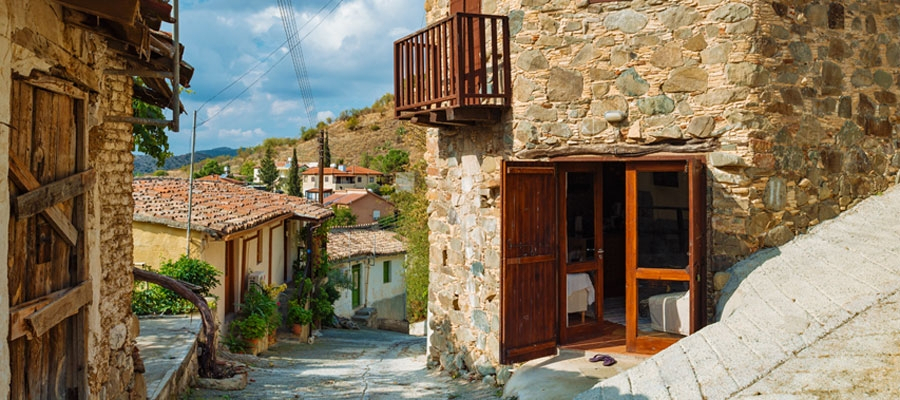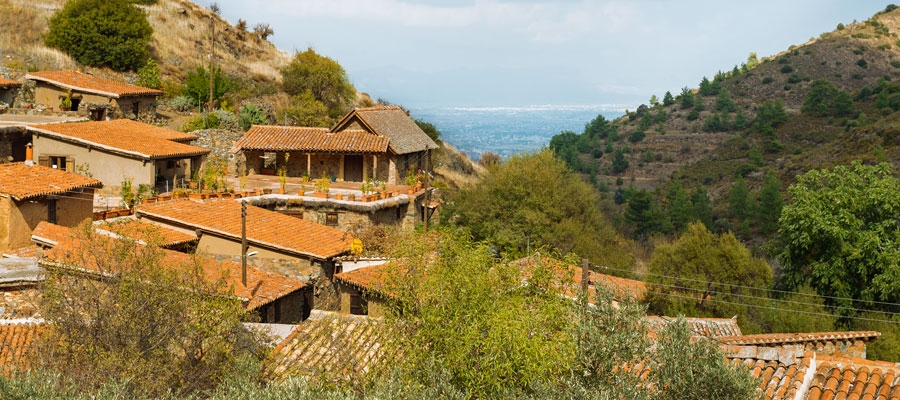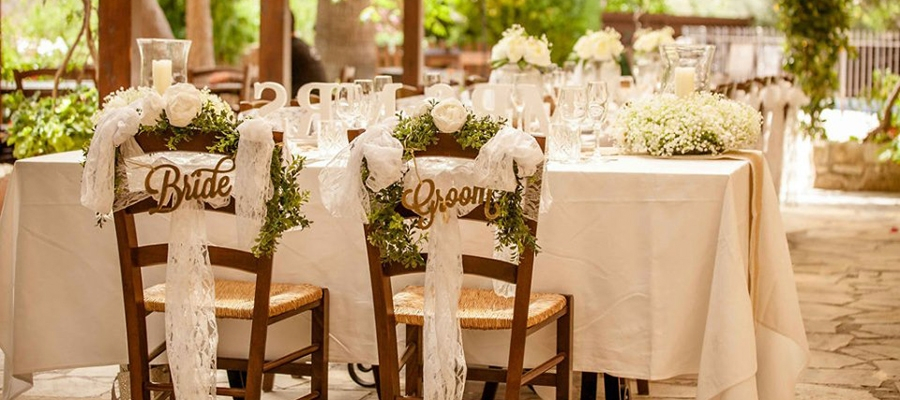Mariages, bénédictions et lunes de miel
Chypre figure parmi les destinations européennes d’excellence dans l’organisation de mariages, bénédictions, et lunes de miel. L’île est connue pour son climat merveilleux, ses paysages splendides et la myriade d’options de lieux de cérémonie et de célébration qu’elle a à offrir. Que ce soit pour des vœux sous le soleil, des cérémonies sacrées ou des aventures de jeunes mariés, l’île d’Aphrodite est l’amour personnifié. Pour de plus amples informations, cliquez ici.
Tant de raisons expliquent que Chypre gagne le cœur des couples désireux de se marier à l’étranger:
-
Une courte durée de vol en provenance de tous les pays européens,
-
Des coûts sensiblement moindres en comparaison à d’autres pays,
-
Des formalités simples, offrant une reconnaissance légale mondialement,
-
Un acte de mariage délivré le jour même de la cérémonie,
-
Une facilité d’organisation, même de dernière minute,
-
La possibilité de communiquer en anglais partout ou presque,
-
Une variété étonnante de lieux de cérémonie y compris des lieux atypiques comme : plages, yachts, châteaux, musées, caves à vin et villages traditionnels,
-
Une large gamme de mariages sur mesure, thèmatiques ainsi que des packages sont disponibles,
-
Des mariages selon les coutumes traditionnelles des villages chypriotes, pour un mariage hors du commun et une expérience unique,
-
Des plages superbes aux eaux cristallines,
-
Un climat fantastique avec un temps chaud et ensoleillé toute l’année,
-
La possibilité de combiner mariage, bénédiction ou renouvellement de vœux avec des vacances ou un voyage de noces,
-
Des officiers d’état civil municipaux, professionnels et expérimentés, à votre disposition pour vous aider dans l’organisation de la cérémonie en fonction de vos envies et votre budget,
-
La possibilité de se faire aider par des wedding planners, professionnels et expérimentés, spécialisés dans les mariages sur mesure,
-
Une large gamme d’hébergements convenant à tous les budgets : des resorts 5 étoiles aux appartements en location,
-
Famille et amis peuvent y combiner mariage et vacances,
-
La délicieuse cuisine méditerranéenne,
-
La chaleureuse hospitalité ancrée dans la culture locale,
-
Chypre bien connue comme « l’île de l’amour», identifiant la mariée à Aphrodite, déesse de l’amour et de la beauté, née ici,
-
Diverses activités pouvant y être pratiquées : les sports aquatiques, le golf, la voile, l’équitation, la randonnée, le cyclisme et même le ski et le snowboard en hiver.
Lieux de cérémonie et de célébration de mariages civils et religieux
Toutes les villes de Chypre, grandes ou petites, disposent de leurs propres bureaux municipaux, où vous pourrez obtenir votre autorisation de mariage, et par la suite vous marier, dans le cas où vous projetez un mariage civil.
Si vous optez pour un mariage religieux, vous devez commencer par déposer votre dossier de demande d’autorisation de mariage auprès des instances municipales, avant d’entamer les démarches en vue de la cérémonie, auprès des autorités religieuses de votre choix. Pour une liste complète des municipalités et des lieux de cérémonies religieuses cliquez sur ces liens.
Tout à portée de main
Vous trouverez à Chypre une large gamme de prestations pour préparer votre mariage et/ou votre voyage de noces sur l’île. Des équipes de professionnels de tous les secteurs, sont à votre disposition pour que votre mariage de rêve devienne une réalité. Cliquez ici pour de plus amples informations.
Du début à la fin, vous trouverez tout, pour que rien ne manque le jour J.
-
Wedding planners,
-
Acte de mariage,
-
Conception et impression de faire-parts,
-
Fleuristes (bouquets & arrangements floraux),
-
Musique (live, DJs, traditionnelle, etc.),
-
Tentes de réception,
-
Robe de mariée / robes de demoiselles d’honneur,
-
Costume de marié,
-
Alliances,
-
Ballotins(cadeaux pour les convives),
-
Gâteau de mariage,
-
Photographies & vidéo,
-
Lieux de réception,
-
Limousines / voitures anciennes / calèches,
-
Prise en charge des convives : transport / location de voitures / hébergement,
-
Maquillage et coiffeur,
-
Feux d’artifices, ballons et effets spéciaux,
-
Fêtes d’enterrement de vie de garçon ou de jeune fille,
-
Organisation du voyage de noces,
-
Catamarans : excursions / réceptions / célébrations,
-
Croisières.
Salons du mariage
L’Office de Tourisme de Chypre (CTO) participe aux salons du mariage organisés, à divers endroits, toute l’année, lors desquels vous pouvez obtenir des renseignements supplémentaires sur les mariages à Chypre et la façon dont cette journée tant attendue pourra se dérouler à la perfection.
Pour des renseignements plus détaillés et une aide dans vos démarches en vue d’un mariage, contactez, selon le cas, votre tour-opérateur, votre agence de voyages, votre hébergement ou votre wedding planner à Chypre.

